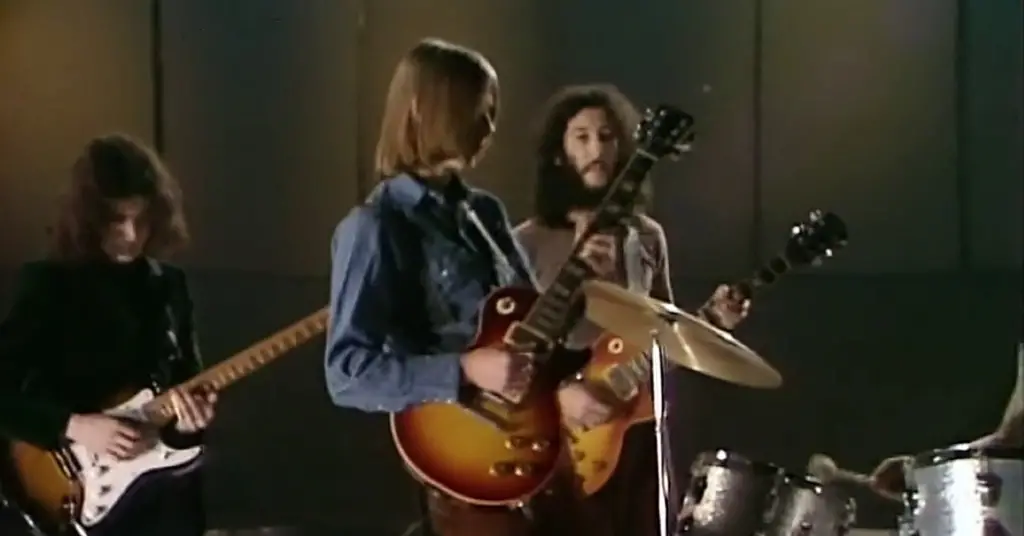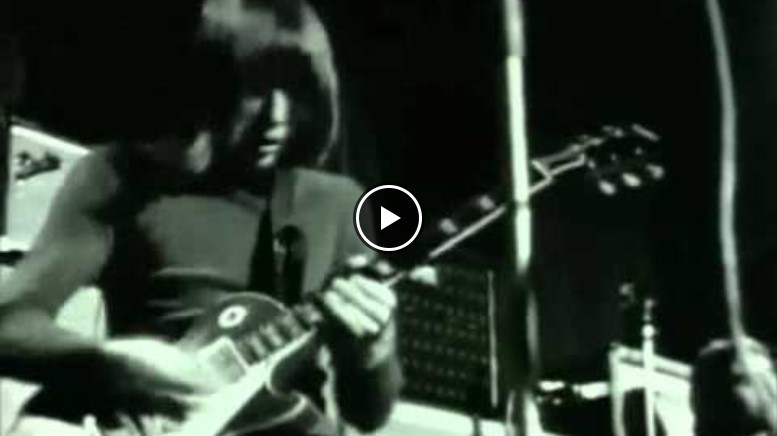Before the Rumours – Discovering the Deep Blues Magic of Fleetwood Mac with Peter Green
Like a lot of people, I first knew Fleetwood Mac as the band behind Rumours, Go Your Own Way, and Landslide.
Great songs, no doubt. But then one day, a friend handed me a CD and said:
“This is Fleetwood Mac too. But with Peter Green.”
And from the first note of “Need Your Love So Bad”, I knew I was in for something completely different.
This wasn’t soft rock. This was blues magic.
And suddenly, I was obsessed with Fleetwood Mac with Peter Green—a version of the band that most of the world forgot, but the blues never did.
Who Was Peter Green?
Peter Green was the founder, heart, and soul of the original Fleetwood Mac.
Before the Stevie Nicks and Lindsey Buckingham era, before the platinum records and radio hits, Fleetwood Mac was a raw, electric blues band born in London’s underground scene.
Peter was more than just a guitarist—he was a visionary.
He took what B.B. King, Otis Rush, and Elmore James had done—and gave it a haunted, British twist.
B.B. King himself once said:
“Peter Green has the sweetest tone I ever heard. He was the only one who gave me the cold sweats.”
And trust me, when you hear Peter play… you understand what he meant.
The Sound: Moody, Melodic, and Unforgettable
Fleetwood Mac with Peter Green didn’t sound like any other British blues band of the late ’60s.
- The guitar tone was clean, biting, and emotional.
- The songs were brooding and melancholy—sometimes mystical.
- The band (with Mick Fleetwood, John McVie, Jeremy Spencer, and later Danny Kirwan) could swing from dirty Chicago blues to slow-burning soul to psychedelic instrumentals—all without missing a beat.
And then there was Peter’s voice.
Not flashy. Not dramatic. But pure and deeply human. You felt what he sang.
Albums That Blew My Mind
If you’re curious where to begin with this earlier version of Fleetwood Mac, here’s what got me hooked:
- 🎸 Fleetwood Mac (1968) – Raw blues debut. Gritty, real, and full of swagger.
- 💙 Mr. Wonderful (1968) – Horns, piano, and dirty electric blues. Peter’s tone is all over this one.
- 🔥 Then Play On (1969) – Their best with Peter Green. More adventurous, with spiritual depth. “Oh Well” and “Coming Your Way” are must-hears.
- 💔 The Pious Bird of Good Omen (1969) – Compilation that includes the legendary “Albatross”, a song so beautiful it feels like a dream.
- 🎶 Blues Jam in Chicago (1969) – A double album where Fleetwood Mac jam with Otis Spann, Willie Dixon, Buddy Guy, and more. Historic and electric.
My Favorite Peter Green Moments
There are guitar solos that impress.
Then there are solos that stay with you for life.
Peter Green’s “Need Your Love So Bad,” “Love That Burns,” and “Man of the World” are like musical time capsules—full of longing, grace, and soul.
But if you want the one that changed me forever? It’s “The Supernatural”—an instrumental he recorded with John Mayall’s Bluesbreakers.
Just close your eyes and let it wash over you.
What Happened to Peter Green?
Peter Green left Fleetwood Mac in 1970 after a long, painful battle with mental illness.
Drugs, fame, and his own fragile spirit took their toll.
He stepped away from the spotlight for decades—re-emerging only occasionally.
But for those of us who know…
His legacy never faded.
In fact, his influence grew, quietly shaping the tones of Gary Moore, Santana, Joe Bonamassa, and John Mayer.
And in 2020, just before he passed, a star-studded tribute show was held in his honor—featuring David Gilmour, Kirk Hammett, Billy Gibbons, Pete Townshend, and more.
Because everyone who ever picked up a guitar felt his touch.
Why Fleetwood Mac with Peter Green Still Matters
This version of Fleetwood Mac is not a warm-up act for the band’s later success.
It’s a wholly separate thing—a snapshot of what blues could be in the hands of someone brave enough to take it somewhere new.
Peter Green wasn’t flashy.
He didn’t sell you the blues—he gave it to you, straight and beautiful.
His playing taught me that a whisper can be louder than a scream, that restraint is a form of power, and that feeling matters more than speed.
Where to Start If You’re New
Your Peter Green-era Fleetwood Mac starter kit:
- 🎧 Then Play On – A haunting masterpiece.
- 💿 Fleetwood Mac (1968) – For raw blues energy.
- 🎸 Blues Jam in Chicago – Historic sessions with legends.
- 📺 YouTube: Look up “Peter Green live 1969,” “Albatross,” or “Oh Well Part 1” to see it in motion.
More at fleetwoodmac.com
Fleetwood Mac with Peter Green wasn’t a stepping stone. It was a cathedral built out of tone, touch, and soul.
And once you step inside, you never leave the same. 🎸💙🙏















